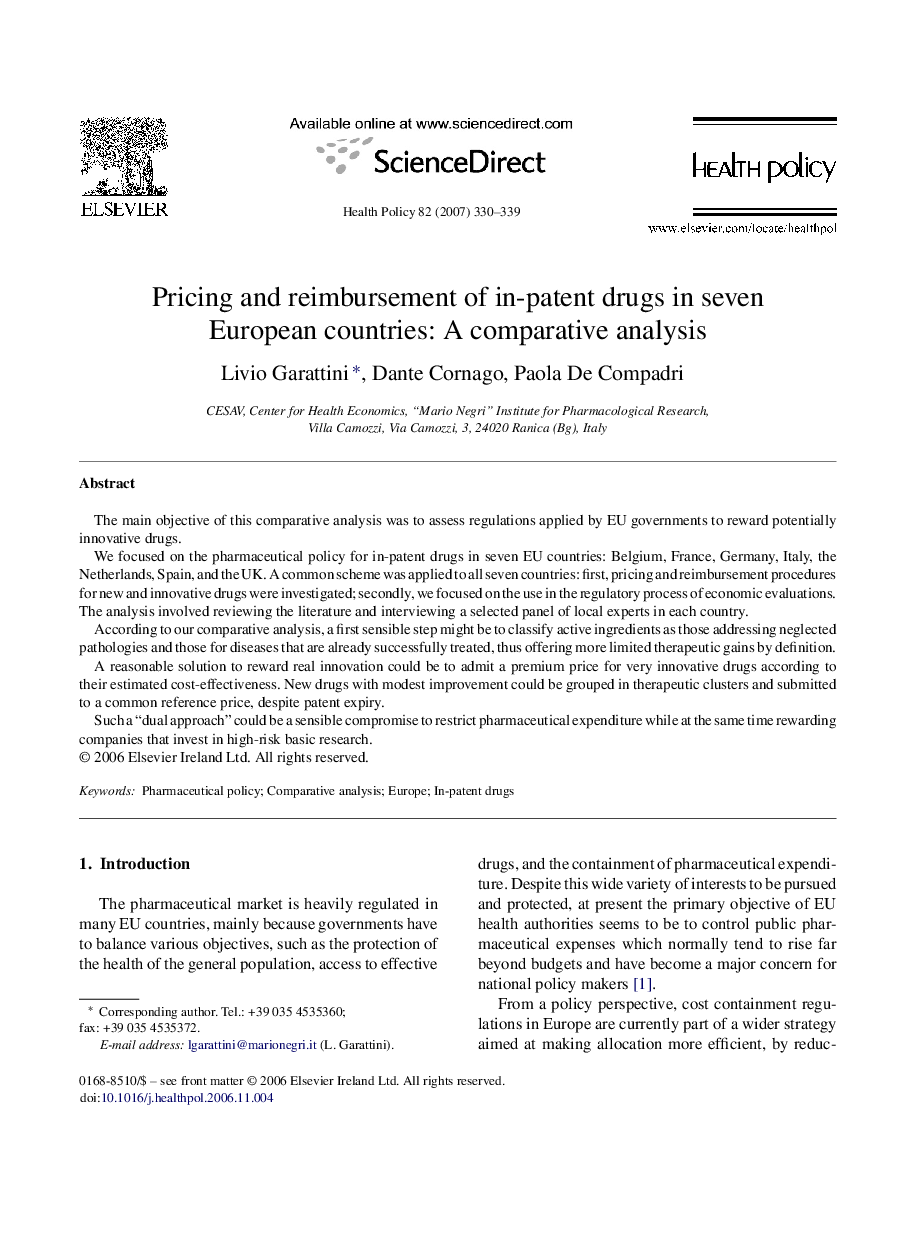| Article ID | Journal | Published Year | Pages | File Type |
|---|---|---|---|---|
| 4198852 | Health Policy | 2007 | 10 Pages |
The main objective of this comparative analysis was to assess regulations applied by EU governments to reward potentially innovative drugs.We focused on the pharmaceutical policy for in-patent drugs in seven EU countries: Belgium, France, Germany, Italy, the Netherlands, Spain, and the UK. A common scheme was applied to all seven countries: first, pricing and reimbursement procedures for new and innovative drugs were investigated; secondly, we focused on the use in the regulatory process of economic evaluations. The analysis involved reviewing the literature and interviewing a selected panel of local experts in each country.According to our comparative analysis, a first sensible step might be to classify active ingredients as those addressing neglected pathologies and those for diseases that are already successfully treated, thus offering more limited therapeutic gains by definition.A reasonable solution to reward real innovation could be to admit a premium price for very innovative drugs according to their estimated cost-effectiveness. New drugs with modest improvement could be grouped in therapeutic clusters and submitted to a common reference price, despite patent expiry.Such a “dual approach” could be a sensible compromise to restrict pharmaceutical expenditure while at the same time rewarding companies that invest in high-risk basic research.
